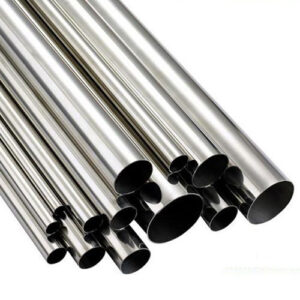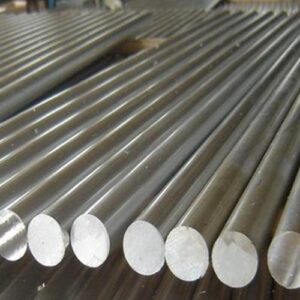Introduction

In modern engineering, materials play a crucial role in determining the performance, durability, and sustainability of structures and components. Among the diverse range of materials available, 316 stainless steel round bars have gained prominence for their exceptional properties and versatility. This blog explores the innovative uses of 316 stainless steel round bars across various industries and applications.
Properties of 316 Stainless Steel Round Bars
316 stainless steel is an austenitic stainless steel alloy known for its superior corrosion resistance, especially in aggressive environments containing chlorides. Its key properties include high creep strength, excellent toughness, and formability, making it suitable for a wide array of applications from marine to chemical processing industries.
Applications in Marine Engineering
Marine environments pose significant challenges due to the corrosive nature of seawater and exposure to varying temperatures. 316 stainless steel round bars are extensively used in marine engineering for applications such as shipbuilding, offshore platforms, and marine infrastructure. The alloy’s resistance to pitting and crevice corrosion ensures longevity and reliability in these demanding conditions.
Structural Applications in Architecture
In architectural engineering, 316 stainless steel round bars find applications in structural components where aesthetics, durability, and strength are essential. Examples include bridges, facades, and artistic installations where the material’s sleek finish and corrosion resistance contribute to both functionality and visual appeal.
Industrial and Chemical Processing
Industries reliant on chemical processing benefit from 316 stainless steel round bars due to their resistance to chemical corrosion and high temperatures. Equipment such as storage tanks, pipelines, and processing vessels utilize this alloy to ensure product purity and operational reliability, thereby reducing maintenance costs and downtime.
Mechanical and Automotive Engineering
In mechanical and automotive engineering, 316 stainless steel round bars are employed in critical components requiring strength, reliability, and resistance to wear and tear. Applications range from shafts and fasteners to exhaust systems and engine parts, where the alloy’s mechanical properties enhance performance and longevity under demanding operational conditions.
Advancements and Future Trends
As technological advancements continue to drive innovation in materials science, the use of 316 stainless steel round bars is expected to expand further. Research into alloy modifications and manufacturing processes aims to enhance its mechanical properties, sustainability, and cost-effectiveness, paving the way for new applications in emerging industries such as renewable energy and biotechnology.
Case Studies and Success Stories
To illustrate the practical benefits of using 316 stainless steel round bars, several case studies highlight successful applications across different sectors. These examples demonstrate how the alloy’s unique combination of properties has resolved engineering challenges and contributed to the overall efficiency and reliability of diverse projects.
Applications of 316 Stainless Steel Round Bars

| Industry/Application | Example Use |
|---|---|
| Marine Engineering | Shipbuilding components |
| Architectural Engineering | Bridge structures |
| Chemical Processing | Storage tanks |
| Mechanical Engineering | Engine components |
| Automotive Industry | Exhaust systems |
| Renewable Energy | Wind turbine components |
| Biotechnology | Pharmaceutical equipment |
Conclusion
In conclusion, the versatile properties of 316 stainless steel round bars make them indispensable in modern engineering across various industries. From marine and architectural applications to chemical processing and automotive sectors, this alloy continues to redefine standards for durability, reliability, and sustainability. As technology progresses, ongoing research and development promise further advancements, ensuring 316 stainless steel remains a cornerstone material in the evolving landscape of engineering.
FAQ
Q: What are the key advantages of using 316 stainless steel round bars in marine applications?
A: 316 stainless steel offers superior corrosion resistance, especially in marine environments where exposure to seawater and salt spray is prevalent. This helps in maintaining structural integrity and longevity of marine structures and equipment.
Q: How does 316 stainless steel compare to other stainless steel alloys?
A: Compared to other stainless steel alloys, 316 stainless steel has higher corrosion resistance, particularly against chlorides and acids. It also exhibits excellent weldability and formability, making it suitable for a wide range of fabrication processes.
Q: What future trends are anticipated for the use of 316 stainless steel round bars?
A: Future trends include advancements in alloy compositions and manufacturing techniques to further improve mechanical properties, sustainability, and cost-effectiveness. The alloy is expected to find new applications in emerging fields such as renewable energy and biotechnology.
